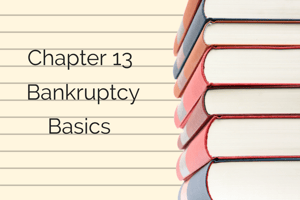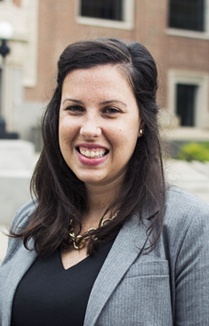 Most Minnesota families live hand to mouth. Almost half of the households in America cannot cover a $400 emergency expense. Most secured debt payments, like rent, mortgage, or auto loans, are three or four times that amount. In other words, just one missed installment can mean a world of hurt. Most people lack the means to make catchup payments.
Most Minnesota families live hand to mouth. Almost half of the households in America cannot cover a $400 emergency expense. Most secured debt payments, like rent, mortgage, or auto loans, are three or four times that amount. In other words, just one missed installment can mean a world of hurt. Most people lack the means to make catchup payments.
Most moneylenders begin adverse action, including the dreaded acceleration notice, after just two or three missed payments. An acceleration notice demands the entire loan balance immediately; the lender will no longer accept partial payments. In situations like this, a federally-guaranteed debt repayment plan is probably your best option. Almost everything you need to know about a Chapter 13 bankruptcy is described below.
Do I Qualify for Chapter 13?
To qualify for a Chapter 7, the debtor’s income must be below the statewide median. But there’s no income requirement for a Chapter 13, so that chapter is available to all debtors, regardless of income.
The wage-earner plan is a little like going on an allowance. As outlined below, debtors must normally commit all their disposable income to debt retirement. The law absolutely requires that all secured debt delinquency, like past-due mortgage payments, be satisfied by the end of the protected repayment plan. If the debtor cannot do this, the debtor does not qualify for this type of bankruptcy.
Everything You Need to Know About the Automatic Stay in a Chapter 13
Section 362 of the Bankruptcy Code allows debtors to repay secured debt delinquencies. The law gives families up to five years to make catch-up payments. During that time, the moneylender cannot take any adverse action. That includes things like:
- Creditor harassment,
- Repossession,
- Wage garnishment, and
- Foreclosure.
To get around the Automatic Stay, the moneylender normally needs special permission from the bankruptcy judge, and must be able to prove that there is sufficient legal reasons for the court to lift the Automatic Stay. In sum, the Automatic Stay is a microcosm of everything you need to know about a Chapter 13 bankruptcy.
What Property is Exempt in a Chapter 13?
The stated purpose of the Bankruptcy Code is to give the honest but unfortunate debtor a fresh start. Such a fresh start is impossible if the debtor loses a substantial number of assets. That would put the debtor behind the starting line instead of at the starting line. So, Minnesota debtors may exempt most of their property, including:
- House,
- Retirement account,
- Motor vehicle, and
- Personal property.
Most of these exemptions are dollar-based as opposed to item-based. For example, federal exemptions allow debtors to exempt the home equity as opposed to the house itself. If the debtor’s equity is below the ceiling, the entire house is exempt. And the good news for chapter 13 debtors is that, unlike chapter 7, if there are non-exempt assets, the chapter 13 trustee does not take over the assets; the debtor retains non-exempt assets (although the debtor has to pay for the value of the non-exempt assets to unsecured creditors).
How Does the Protected Repayment Period Work?
When they file their voluntary petitions, debtors usually also submit repayment plans. As mentioned, most debtors commit as much money as possible to debt repayment. The sooner these debts reach a zero balance, the sooner the debtor can get out from under bankruptcy.
The repayment plan is income-based. Debtors pay what they can afford and not what the moneylender demands. Furthermore, this debt repayment plan can last up to sixty months (five years). Perhaps best of all, the Automatic Stay remains in force. As long as the debtor makes the monthly debt consolidation payment, it’s almost impossible for moneylenders to take adverse action.
At the close of the repayment period, any remaining unsecured debt is discharged. That includes credit cards, medical bills, and payday loans. That even includes old income taxes and delinquent student loans, in some cases.
Some Special Issues in a Chapter 13
Money is tight during a Chapter 13. But your financial future is no time to save a little money with a do-it-yourself bankruptcy or a non-lawyer petition preparer. Bankruptcy can be extremely complex.
If there is a dispute as to the amount owed, most bankruptcy judges refer the matter to mediation. There, an attorney can speak up for you and usually negotiate a more favorable repayment schedule. These are services that a non-lawyer cannot perform.
Moreover, an attorney may be able to reclassify some debt. Many Minnesotans purchased their homes with an 80/20 mortgage. If the house’s value has dropped significantly, there may not be enough to secure both mortgages. As a result, an attorney could “strip off” the junior mortgage and turn it into an unsecured debt. Its subsequent discharge could save the homeowner hundreds of dollars each month.
Chapter 13 helps you stay in your home and hang onto your other assets while you catch up on payments. During this time, most debtors are unmolested by obnoxious creditors. For a free consultation with an experienced bankruptcy attorney in Minnesota, contact Kain & Scott. We promise to be Minnesota’s friendliest bankruptcy law firm, or your money back.


